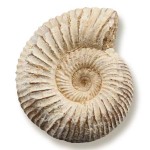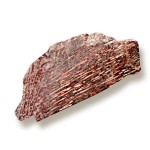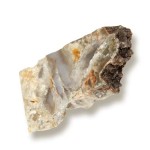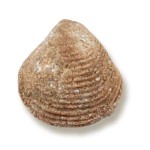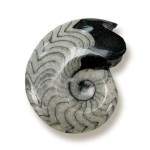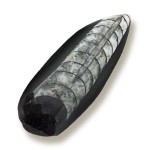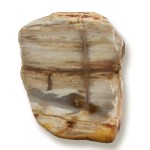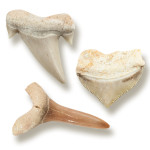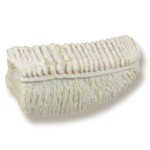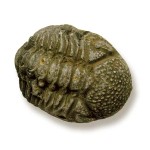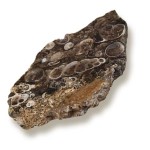Fossils
Fossils (from Classical Latin fossilis, literally “obtained by digging”) are the preserved remains or traces of animals (also known as zoolites), plants, and other organisms from the remote past. The totality of fossils, both discovered and undiscovered, and their placement in fossiliferous (fossil-containing) rock formations and sedimentary layers (strata) is known as the fossil record.
The study of fossils across geological time, how they were formed, and the evolutionary relationships between taxa (phylogeny) are some of the most important functions of the science of paleontology. Such a preserved specimen is called a “fossil” if it is older than some minimum age, most often the arbitrary date of 10,000 years. Hence, fossils range in age from the youngest at the start of the Holocene Epoch to the oldest from the Archaean Eon, up to 3.48 billion years old. The observation that certain fossils were associated with certain rock strata led early geologists to recognize a geological timescale in the 19th century. The development of radiometric dating techniques in the early 20th century allowed geologists to determine the numerical or “absolute” age of the various strata and thereby the included fossils.
Like extant organisms, fossils vary in size from microscopic, even single bacterial cells one micrometer in diameter, to gigantic, such as dinosaurs and trees many meters long and weighing many tons. A fossil normally preserves only a portion of the deceased organism, usually that portion that was partially mineralized during life, such as the bones and teeth of vertebrates, or the chitinous or calcareous exoskeletons of invertebrates. Fossils may also consist of the marks left behind by the organism while it was alive, such as the footprint or feces (coprolites) of a reptile. These types of fossil are called trace fossils (or ichnofossils), as opposed to body fossils. Finally, past life leaves some markers that cannot be seen but can be detected in the form of biochemical signals; these are known as chemofossils or biomarkers.
PERMINERALIZATION – Minerals are deposited in the cells of the organism which crystallize the cell walls and create a very lifelike fossil that can even retain internal structures as they were when alive. Fossils of this type can also contain some of the original material from the organism such as a shell. An example of fossils created by permineralization would be ammonites with original outer shell substance and all internal chambers intact. Dinosaur bones with open internal cell structure intact are also another example of this kind of fossil. Permineralization can fossilize an organism to a widely varying degree of preservation.
PETRIFICATION – This is a process that advances after permineralization whereby the silicified cell walls of the organism then progress to becoming completely filled with minerals. An example of this would be petrified wood where a sliced portion shows internal structures but is pure stone with no open, hollow structures. Another example is dinosaur bone that can be sliced and polished in cross-section and be solid but may still display remnants of the walls of the former internal bone cell anatomy.
MOLD and/or CAST – In a mold, the former organism is completely dissolved and all that is left is a life-like negative cavity creating a mold. A cast is taking it one step further whereby, after the mold is formed, the cavity is slowly filled with minerals and an exact copy in stone is formed of the former organism. An example of a MOLD fossil would be the many bivalve fossils that can be found inside some rocks. An example of a CAST fossil would be ammonites that have no former shell and no internal structure such as the Cretaceous ammonites found in Texas, U.S.A..
INTACT ORIGINAL – Fossils of this type are the actual former living object still intact in original organic form. This is very rare but most often the case with fossils found in caves. Some caves are literally like a time capsule with no environmental disturbance. Here you can have a fossil mammal bone sitting up on a rock out of the way of standing water and 40,000 years later, the bone can still be burned like wood and is still in its original organic form. Some other forms of INTACT ORIGINAL fossils are teeth which being comprised of dense stable materials like dentin and enamel, resist mineralization. Scientists have been able to extract collagen from fossil teeth because the preservation is in essence, still in its original substance as it was when the organism was still alive.
PSEUDOFOSSIL – A geological anomaly that resembles a former living organism but is purely coincidental and has no origin in being a trace or remain of a living organism. Pseudofossils have been fooling people for millennia. Most often, they are odd-shaped nodules or concretions. Some can look amazingly authentic but of an organism that would be impossible to preserve in the manner in which it is found, such as a petrified human head. Other forms of pseudofossils can be an odd-shaped pattern in stone such as mineral dendrites on lithographic limestone rock that resemble plant fossils.





